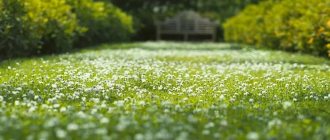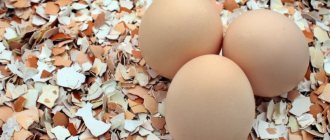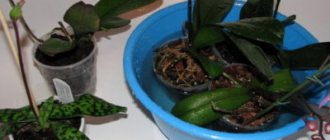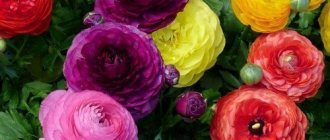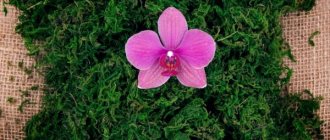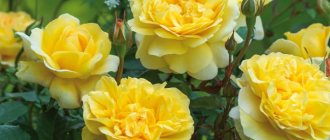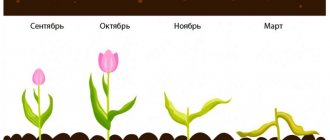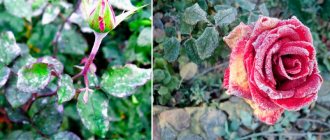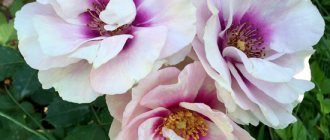Clover (Trifolium) is a meadow crop that has long been used in agriculture as a fodder and green manure grass. In addition, some types of clover are used by landscape designers to decorate lawns and green spaces.
Dutch breeders were the first to use clover as a lawn grass. They developed varieties specifically intended for decorative use. This contributed to the spread of the tradition throughout the world. In Russia, clover was first grown for use in landscape design in the 18th century.
What it is?
Clover is a herbaceous plant, a member of the legume family. its Latin name Trifolium, which means “trefoil” , due to the presence of complex, three-component leaves (tres - three and folium - leaf).
The popular name for clover is also widely known - kashka (globular inflorescences of clover, collected from small tubular flowers filled with sweet pollen).
There are other names, among which the most popular are woodpecker or woodpecker, Trojan, three-potion, honey cake, crown, ash pan, field nut, scrofulous grass, God's bread, light beam. The Russian name “clover”, first found in Nikolai Lubchanin’s herbal book, comes from the German “klewer” or English “clover”.
People give the shamrock a magical meaning, considering it a sign of well-being , and Christians love the plant for its association with the Divine Trinity. It was customary to carry images of a shamrock with oneself for good luck, and in Ireland the shamrock even became a cultural symbol of the country.
In nature, clover grows throughout the European continent, as well as in Central Asia and Africa. In Russia, clover can be found in meadows and forest glades in the central region, Siberia, the Far East and Kamchatka.
Botanical characteristics
The clover genus includes more than 300 perennial and annual varieties. About 70 of them grow in Russia. Different types of clover differ from each other in the color of the leaves, the color of the flowers, and the structure of the root system. The height of plants with an erect stem can reach 80 cm , and creeping species rise 10-15 cm above the ground surface.
Clover is distinguished by a powerful, well-developed root system, penetrating into the soil to 230-250 cm. It consists of a tap-type main root and a number of lateral roots. Some species have a cylindrical or spindle-shaped root system, and a number of species form rhizomes.
The characteristic nodules on the roots are the result of the action of nitrogen-fixing bacteria . Receiving the necessary nutrients from the plant, they absorb nitrogen compounds from the atmosphere and convert them into a form accessible to clover.
The stem is round and cylindrical, depending on the species – erect or prostrate, highly branched. Different types of clover are distinguished by a large number of internodes on the stems - from 5 to 8 or more.
The leaves of lawn clover, like all species, are trifoliate (today varieties have been bred with quintuple and palmately dissected leaves).
The leaf blades are broadly ovate, located on petioles of varying lengths .
Stipules are fused with leaf petioles. The leaf blade can be distinguished by the presence of a light triangular spot in the center.
Small tubular flowers of scarlet, pink, white or yellowish color are collected in round or oval-shaped heads of 60-170 pieces. Each flower consists of a calyx, a tubular corolla, ovaries and stamens . Short ovaries contain from 2 to 8 ovules. The type of pollination is cross. The main pollinators of shamrocks are bees and bumblebees.
The fruiting period occurs in late summer and autumn. A small bean-type fruit is formed in the dried corolla, containing 1-2 spherical or elongated seeds weighing up to 1.8 g.
What does it look like?
Clover is a common meadow crop. Due to its aesthetic appeal, it is perfect for decorative decoration of lawns and lawns. Quickly spreading throughout the area, the plant forms a thick carpet of lush green color . During the flowering period (occurs twice a year), the entire carpet is covered with bright inflorescences with a pleasant smell.
Despite the fact that the trefoil has tender and soft shoots and leaves, it is not subject to trampling. It is pleasant to walk on a clover lawn barefoot, without fear that it will lose its attractive shape. The proximity to cereal crops plays a positive role, since the plants mutually support each other. Lawns where a grass mix is used take on a brighter and richer appearance.
After planting, clover quickly spreads throughout the area, crowding out weeds. The lawn becomes smooth and beautiful. The plant feels good in sunny areas . It also survives in shaded and poorly drained areas.
Use in cooking
Most often, fresh sprouts are used as food, containing important vitamins and microelements. Magnesium, calcium, potassium and vitamins B1, B3, C are present in large quantities.
Sprouts, which are suitable for many dishes, have a pleasant, mild taste with a subtle nutty note. They are used in the same way as watercress.
Seedlings are easy to grow in a germinator. After 5-8 days they are ready to eat.
Crushed young leaves of the flower are added to green cottage cheese, soups, salads and sandwiches.
They go great with parsley. In the spring, the nutrient-rich greens are used to make smoothies. The mild-tasting flowers are also suitable for this purpose, but are rarely eaten. Sometimes they are used to decorate dishes.
Clover stems used for cooking
Clover leaves for salad dressing
Crispbread
Collect two full handfuls of inflorescences. Grind them in a mortar and mix with one tablespoon of flour, a teaspoon of olive oil, a pinch of salt and pepper to taste. Spread the dough in a thin layer on a baking tray lined with baking paper and bake the crackers at low temperature (150°C) for about 15 minutes.
Types and varieties
Several plant species have been bred for decorative purposes, meeting different characteristics. They differ in the structure of the root system, the color of the leaves and flowers. All decorative varieties are unpretentious and can be used in regions with different climatic conditions.
Annual and perennial
Of the many types of clover, the most common are three annual and three perennial. Perennial species are used for decorative purposes . They provide a stable cover for several years without losing its decorative properties:
- red or red clover (Trifolium pratense);
- hybrid or pink clover (Trifolium hibridum);
- creeping or white clover (Trifolium repens).
Annual species are used for agricultural purposes . Their aboveground part contains a large amount of proteins, starch, sugars and microelements, and the root system actively accumulates nitrogen:
- Crimson clover (Trifolium incarnatum) is used as protein feed for cattle. In addition, it is a valuable honey plant.
- Alexandrian clover, bersim (Trifolium alexandrinum) is used throughout the world as a forage and green manure crop.
- Persian clover, shabdar (Trifolium resupinatum) is used as a forage crop in southern Russia and the Transcaucasus. It is not widely used as an ornamental crop.
By stem height
The length of the stems is an important indicator that determines the decorative properties of the trefoil.
Tall species include varieties of red or meadow clover with an erect stem.
Lawns made from red clover varieties are more sparse . Due to this, they are less stable and susceptible to trampling. They are used to decorate decorative lawns and flower beds.
Creeping or white clover has strongly branching, creeping stems that form a cover up to 10 cm high. Clover of this type is durable, unpretentious, not afraid of trampling, and grows quickly.
White trefoil is used to decorate areas for outdoor games , and when planted in a flower garden, it needs constant growth restriction and control. Among clovers of this type, the Rivendell variety with bright emerald-colored foliage is popular.
Microclover was specially bred for decorative use. Ideal for planting in areas where playgrounds and recreation areas will be organized.
Microclover is characterized by active growth, quickly covers bald spots on the lawn, and crowds out weeds.
The plant has low stems, small bright foliage that retains its color even under snow cover. Popular varieties of microclover :
- Pipolina with a very small stem and petioles.
- Pirouette is a medium-flowering variety with a large number of inflorescences.
By color
Traditionally, three types of perennial clover crops are used in landscape design - red, white and pink. Shamrocks with yellowish heads are also used, as well as mixed varieties, including a mix of several types of clover of different colors and heights. Such mixed meadows look very picturesque.
Red
Red (reddish) clover or red clover blooms in large scarlet or pink inflorescences. Flowering begins at the end of May and lasts until the onset of autumn cold weather. For greater stability of the cover, it is often used in combination with other meadow grasses.
The Peach Pink variety has a long flowering period . Large, reddish heads consist of small apical flowers, located one at a time on long peduncles. Each flower consists of many elongated petals. Frosty Feathers have pale, slightly pinkish flowers. After flowering, both varieties produce beautiful fruits, thanks to which the plants do not lose their decorative properties until the end of the season.
White
White or creeping clover is most often used to organize flowering meadows, since it is distinguished by its decorativeness, unpretentiousness, and rapid growth.
White clover is considered a low-growing species: it spreads along the ground and does not require frequent trimming.
It is a valuable forage and soil-improving crop , used to protect tree trunks in the garden.
During the flowering period, it produces large spherical flower heads with a white corolla. Today, many varieties of white clover have been bred to improve the decorative qualities of flower heads and foliage.
- The Green Ice variety has soft light green leaves with a brown rim.
- Variety var. Nigricans is distinguished by burgundy foliage with a light border along the edge.
- Spring shamrocks have a brown edge around a dark green center.
- There is a thin white stripe running down the center of the foliage of Salsa Dancer, with a burgundy border around the edges.
- The Isabella variety surprises with the carmine color of its leaves.
Pink
Pink clover is classified as a meadow clover because it is a hybrid obtained by crossing the red and white varieties. It has erect stems reaching a height of 30-50 cm and requires frequent pruning. Blooms from June to October. In addition to decorative properties, it has high agrotechnical qualities : it is an excellent honey plant and pollen plant.
Yellow
Pale yellow clover (Trifolium ochroleucon) is used for decorative purposes. The plant has erect stems up to 50 cm high. The leaf blades are elongated (up to 3 cm), slightly pubescent. Pastel or light yellow flowers are collected in oblong inflorescences up to 4 cm long.
Clover white
Other scientific names: creeping clover, creeping amoria, white porridge.
A perennial plant that has a branched, shortened root system. A creeping stem that takes root at the nodes. The leaves are tripartite, obovate in shape and sit on ascending petioles. The inflorescences are white and spherical, blooming from the edges to the center. Peduncles are longer than petioles. Plant height is 15-30 cm.
Creeping clover is an excellent honey plant (up to 100 kg of honey can be collected per hectare), and it is also well eaten by livestock (up to 50 centners of feed are harvested per hectare). On cultivated pastures it is sown in a mixture with cereals. By including creeping clover in a grass mixture with timothy, ryegrass, fescue and other grasses, it will be possible to increase the crude protein content and reduce the amount of fiber. Joint sowing of creeping clover and hedgehog grass is not allowed.
Clover feels best on moist loams. The optimal pH value is 6-7. Approximately four kilos of plowing materials are consumed per hectare. Planting depth - no more than 2 centimeters. For spring and annual grasses, clover is sown together with a cover crop. Sowing under winter grasses is done only after the soil is sufficiently dry.
Other names for the herb: white clover, white clover, Dutch clover.
White clover in medicine
White clover flowers can be harvested from May to August.
Use in folk medicine: creeping clover is most often brewed as a general tonic; for women's diseases it is drunk as a wound-healing drug. Since clover has an antitoxic effect, an infusion of it helps with poisoning. It has a weak analgesic property and, like meadow clover, helps well with many ailments associated with the heart and blood vessels. It can also be used for colds, as it has antipyretic, anti-inflammatory and, in addition, expectorant properties.
Directions for use: dry herb (1 gram) + boiling water (100-150ml). Take 50 ml after 1 hour of infusion before each meal.
Why is it important to know the differences and choose wisely?
Different types and varieties of trefoil differ not only in the appearance of flowering plants, but also in their biological characteristics.
For example, red and white varieties have different degrees of rooting. Red clover roots go underground to a depth of more than 2 meters. They are more resistant to arid and cold climates, but do not tolerate close proximity to groundwater.
White clover takes root to a depth of up to half a meter, which makes the plant more resistant to close groundwater. Creeping varieties tolerate increased soil acidity less well .
The appearance of the site will depend not only on the shape and shade of the inflorescences, but also on the shape and color of the leaves. Therefore, before purchasing, you should carefully study all existing types and varieties of clover in order to choose the most suitable one for your site.
Where can it grow and be grown?
Creeping clover grows well in loamy and sandy loam soils. For meadow soil, the optimal composition is: soddy-podzolic, chernozem or gray forest. The pH level should be close to neutral (6-7). Strongly acidic soils must be deacidified before planting by adding dolomite flour or lime. Preparing the soil for planting is carried out in the usual manner :
- The site is dug up, the roots of weeds are removed, and the soil is compacted.
- In case of severe weed infestation, the soil is treated with herbicides such as Roundup.
- To avoid excessive moisture of the root system, organize drainage by laying down a layer of sand and a layer of crushed stone.
The culture needs sufficient sunlight . The ideal climate for active growth is moderately warm, with sufficient humidity and without sharp temperature fluctuations. Snow cover is stable and permanent.
Risks, side effects and contraindications
Despite all the beneficial properties of clover, there are contraindications to its use:
- When used correctly, short-term side effects are rare. This is mainly an intolerance or allergy to the active ingredients.
- There is no consensus among scientists about the long-term effects. Hormone replacement therapy drugs are thought to cause the development of some types of cancer, especially breast cancer. This happens because excess estrogen triggers certain reactions in the body that stimulate the formation of malignant cells. In contrast, biochanin A, which is an isoflavone, has been shown to fight cancer in some laboratory experiments.
Some studies have shown that long-term use causes headaches and nausea. However, a cause-and-effect relationship has not yet been proven.
- To avoid trouble, clover preparations should not be used if you are pregnant or have estrogen-induced breast cancer.
- All green parts can be poisonous depending on the season and weather conditions. This is due to changes in secondary metabolism. The amount of herb consumed is also important. However, cases of poisoning are rare.
What species bloom, how and when?
Among the main types of trefoil grown for agricultural needs and as an object of landscape design, the following are the most popular:
- Red clover is a popular species with a wide growing range. It is cultivated in agriculture as a honey plant, and also as a valuable fodder plant. Blooms with bright red or pink inflorescences.
Serves as a decoration for lawns, lawns and flower beds. It has a long, two-stage flowering period.
- Mountain clover. The distribution area covers the entire Eurasian continent. It blooms with large, white inflorescences in the form of single heads. The flowering period begins in early summer and continues until the end of July. Tolerant to dry climates.
- Clover is white. Creeping decorative appearance. It has a rapid growth rate, forming a thick green carpet on the site. The most active growth is observed 2-3 years after planting. Needs sufficient light and moisture. It is distinguished by a long flowering period, which lasts all summer, until the onset of autumn cold weather.
- Arable clover. An annual species, which is a low plant with an erect stem, 5-40 cm long. The above-ground part of the plant consists of many complex trefoils of elongated leaf blades. The flowering period lasts from late May to early July. Blooms in long pink inflorescences.
- Alpine clover is a creeping species. It quickly grows in breadth, forming a carpet up to 1 cm high. The abundance of side branches and trefoils adds decorative value to the culture. In June it blooms with spherical pink inflorescences up to 4 cm in diameter. The flowering period lasts until mid-August.
- Pink clover is a hybrid species that blooms with delicate pink heads. Used as a fodder plant, honey plant, and also for decorating lawns. Flowering is long-lasting, beginning in June and lasting until the end of September.
- Medium clover is a perennial crop with pronounced medicinal properties. It has the characteristic of rapid growth. It blooms at the very beginning of summer with small round inflorescences of bright red color. Flowering begins in June and continues for a month and a half.
Growing conditions
Red clover grows in light forests and nutrient-rich meadows and fields. It is located on fresh, fertile, deep clay and loamy soils, with a predilection for lime and sulphates.
Found in the mountains. In the central Alps, some local subspecies reach altitudes of up to 2600 m.
Freely translated into Russian, Tribolium Pratense means meadow plant weevil. The name comes from the Latin word tres or trias (three).
Application in landscape design instead of other crops
Red, pink and white types of clover are widely used in landscape design. The most common area of application is the organization of lawns and flower beds .
Lawns
White creeping clover provides a firm and soft cover, making it more suitable for creating seating areas where it is comfortable to walk barefoot.
You can plant the lawn space with an even green carpet or improve and, at the same time, strengthen the slope. Red and pink clovers are more suitable for organizing flower beds and garden compositions. It is planted in the foreground to give it a natural look. For stability, cereal crops are planted nearby or supports are organized .
When planning lawns with clover, it is recommended to take into account the combination of colors in the autumn, when the inflorescences are replaced by fruits. Balls and elongated boxes of clover are ideally combined with the fruits of echinacea, helenium, and monarda.
The advantages of using clover in landscape design along with other ornamental crops are obvious. These unpretentious plants do not require complex care or frequent watering. They grow quickly, providing a stable cover . When using clover, the composition of the soil noticeably improves and weeds disappear.
Thanks to a strong root system and bright greenery, an alpine hill can be created on the site of a slope, and a vacant lot can be turned into a cozy clearing. White clover lawns are walkable. The cost of planting material is low.
other methods
Clover can be used for more than just lawns. It is suitable for creating flower beds, lawns, it can be used to decorate row spacing and the space between beds , decorate tree trunks, plant along paths, and between slabs.
Temperature
For keeping all types of oxalis at home, the optimal temperature is considered to be +20+24°C, subject to abundant and regular watering and fertilization. During the rest period, the maximum permissible temperature is +18°C. All types of clover do not like drafts.
If in the summer you move plants to an open loggia or garden, find a place protected from the wind, where direct sunlight will not penetrate. There are species with individual characteristics. For example, for heat-loving Ortgisa, the optimal winter temperature will be +17+18°C.
How to sow seeds in open ground correctly?
When preparing to sow lawn clover, seeds are collected from two-year-old plants, laid out to dry, and then stored.
Clover has high frost resistance, so it is sown directly in open ground . To create a thick cover, approximately 320 seeds are required per square meter.
The landing site is carefully leveled, eliminating possible differences. Planting can be done in autumn, before winter and in spring:
- Autumn planting is carried out approximately two months before the first frost (at the very end of summer). It is important to carefully prepare the soil so that the seeds have time to take root before the onset of cold weather. The soil is well loosened, moistened, and the required amount of nutrients is added: organic fertilizer and phosphorus-potassium fertilizer.
The seeds are placed in the soil, evenly distributed over the area, but not buried. Before the seeds germinate, the lawn is covered with plastic film to prevent frostbite on the emerging leaves. By winter frosts, the root system is strengthened and permanent leaves appear.
- Clover is sown before winter in order to saturate the soil with nitrogen. In winter, only the underground, root system of plants will develop. This way they will survive the winter protected from frost.
- Spring sowing is carried out at the very beginning of spring, even before the snow melts. The seeds are laid directly on the morning crust of ice that forms on the surface of the soil. In the middle of the day, the ice melts, and the seeds, along with the melt water, go underground, remaining in its upper layers.
You can plant at a later time (at an air temperature of 10-12°C). The seeds are planted in well-moistened soil to a depth of 1 cm. To be sure, you can mix the seeds with sand. In this case, the distribution of seeds will be more uniform.
When do they sprout?
When planting in spring, seed germination occurs in about two weeks . In autumn, germination is slower, so planting is carried out 1.5-2 months before the onset of cold weather.
Features of pre-emergence care
After sowing the trefoil seeds, the area is mulched with a thin layer of peat and the surface is rolled with a garden roller.
Straw can be used as mulch , under which a moist environment is maintained. This procedure helps improve contact of planting material with the ground.
The seeds will be protected from pecking by birds and from being washed away by streams of water.
While waiting for germination, carefully water the plantings (so as not to wash away the seeds) . In the first days, watering should be daily, but gradually, the frequency of watering is reduced. During this period, it is not recommended to walk around the site. It is also important to ensure that water penetrates into the deep layers of the soil, reaching the roots.
With regular flowering and fruiting, clover lawns grow for 3-6 years without the need for fertilization.
Possible difficulties and errors
The following problems may occur:
- Planting seeds too deeply or compacting the soil too hard can slow germination.
- Plants must receive enough sun. With a lack of light, growth slows down, and some seeds do not germinate.
- When planting in a shaded area, double the number of seeds.
- When preparing for planting, you need to find out what the growth rate of the selected variety is. This determines how many seeds are required per unit area.
- Water the area with the planted seeds carefully, using a spray nozzle so as not to wash away the seeds.
- It is better to combine clover with lawn grass. To do this, the recommended amount of grass is mixed with clover seeds in an amount of 5-10% of the amount of grass.
- If the seeds are planted in an already broken lawn, it must first be mowed and all roots removed. This will ensure that the planting material gets into the soil and successful germination.
Oxalis in the garden
Oxalis grows equally well in partial shade and on an open, sunny lawn. The soil should be nutritious, loose and breathable. Soil acidity is recommended to be neutral or slightly acidic. If necessary, before planting, dig up the soil with the addition of compost and peat. Young plants are planted at a distance of 10-12 cm to a depth of 3-4 cm. It is best to plant in the second half of spring in warm, cloudy weather.
Usually plants have enough natural precipitation. If the drought is prolonged, the bushes are watered in the morning or closer to sunset with a small amount of water.
Infrequently, every 1-2 months, sorrel is fed with a highly diluted mineral complex or “Mullein”.
In autumn, the heat-loving plant must be prepared for wintering. To do this, mulch the soil well at the roots. There is no need to worry about the condition of the above-ground part; it will dry out in any case, and a thick layer of mulch will help the tubers and roots survive until next spring.
Seasonal care rules
Lawn care is easy. It consists of timely watering, mulching, fertilizing and mowing.
Watering
The emphasis on watering is in the summer , when the number of dry days is maximum.
Water the trefoil as the soil dries out (about once a week), making sure that stagnation of water does not form. It is important that places for planting are chosen where flooding does not occur. The areas must be leveled, and a drainage system consisting of a layer of sand and a layer of fine crushed stone must be installed on the clay soil.
Weeding and weed removal are carried out only in the first year , then the clover copes on its own. The procedure is carried out after watering, manually. At the same time, make sure that there are no roots left in the soil.
Fertilizer
Fertilizer (organic fertilizer in combination with a potassium-phosphorus composition) is applied once - when planting seeds. In the future, the plant does without refining the land.
If the soil is highly acidic, add chalk or slaked lime the day before planting.
Potassium-phosphorus fertilizer can also be applied during clover growth for long-term active flowering.
A haircut
Haircut is carried out after the end of the first flowering (in mid-summer) . It helps improve the lawn, removes dry stems, slows down the growth of weeds and stimulates new flowering. Autumn pruning is carried out in order to prepare for winter. It is needed for the plant to survive the winter well, devoting all its strength to maintaining the root system. In the same way, protection against rodents is provided.
Signs and superstitions
Oxalis is a very welcome guest in the house. It promises peace in the family, prosperity, protection from quarrels and omissions, and frequent meetings with friends. The house will easily turn into a full bowl, a place of joyful meetings and gatherings with friends and family. It is believed that the flower will help lonely people solve personal problems and find their soulmate, as well as get rid of despondency and depression. In some countries, oxalis serves as a wonderful gift for Christmas or New Year, as a source of joy and financial well-being.
About the pros and cons of using it in the country
Like any lawn grass, red and white clover has a number of advantages and disadvantages. Among the advantages are the following:
- The property of strengthening slopes is inherent in white clover, since the powerful root system has the ability to form a well-connected turf.
This is also facilitated by the branched, creeping stem, thanks to which clover grows into a dense carpet.
- Thanks to its powerful root system, clover has the ability to suppress weeds.
- Pronounced decorative qualities are inherent in both red and white clover. Both types can be used both as a basis for decorating a lawn, and as a member of a separate garden composition. Powerful foliage, bright flower heads, and a long flowering period help preserve the decorative qualities of the lawn from spring to late autumn.
- The unpretentiousness of clover culture makes it easy to care for. The culture is frost-resistant, tolerates heat well, and does not require frequent watering.
- Clover has the ability to enrich the soil with nitrogen. Its presence provides plants growing nearby with valuable nutrition. Garden plants get sick less, look strong and healthy.
- White clover creates a low green carpet and does not need frequent trimming. Red clover should be trimmed more often.
- White clover is resistant to trampling and is suitable for organizing a playground, sports ground, or recreation area. Red - most often used to decorate lawns that are not trampled underfoot by people and animals.
- Seeds have low cost.
Among the disadvantages are the following:.
- The ability to quickly spread to the sides and the ability to suppress other plants often creates difficulties when creating garden compositions.
- The plant is able to retain moisture for a long time. Therefore, after the rain, the clover area is damp and slippery. Wet plants stain clothes and shoes. On the soil, under the clover carpet, moisture-loving insects - snails and slugs - breed.
- To maintain the decorative appearance of your lawn, it is necessary to periodically remove dried flowers and stems.
- Bees and bumblebees constantly hover over the shamrock plantings.
- After mowing, the lawn looks unsightly until the leaves grow back.
Reviews
According to gardeners, clover used as lawn grass has the following advantages:
- White clover grows quickly, killing weeds.
- There is little maintenance required for a clover lawn, it looks quite beautiful and does not rot. He moves to a free place on his own.
- Clover quickly takes up all the vacated space, but this is good: it is better than any lawn grass. It is very pleasant to walk on soft grass in the morning.
- Clover, sown directly on the local grass, sprouted very quickly and grows in an even, beautiful brush.
- The clover, sown at the end of July, quickly began to grow, forming a soft and beautiful carpet.
- Clover clippings make an excellent mulch for garden plantings.
- White clover grows no higher than 15 cm, while in the area with red clover there are thickets 30-40 cm high.
- A Moorish lawn of perennial flowering plants, which includes red and white clover, is literally indestructible. In areas of greatest trampling, it adapts to a low grass height.
- We are very pleased with the germination of the red clover.
- Porridge lawns are wonderful and require minimal maintenance, unlike other lawn grasses.
- White clover seeds are inexpensive and have excellent germination rates.
- Rivendell is the most popular variety of white clover. He is hardy and unpretentious. Resistant to trampling. It tolerates our harsh winters and hot summers well. Suitable for creating a Moorish lawn, minimal consumption of planting material. Undemanding to climate and soil composition.
Gardeners who sow trefoils in their plots are also faced with disadvantages:
- White clover starts to turn green late.
- Suffers from fungal diseases.
- Grass is slippery, which can lead to injury.
- The constant presence of bees and bumblebees is not encouraging.
- Nodules on the roots attract wireworms.
- Clover is difficult to breed.
- After mowing, only stems without leaves remain, which looks ugly. We have to wait for new regrowth.
- Clover looks good among lawn grass, but when planted in solid grass, it looks motley and ugly.
Reviews about clover can be read here, here, here and here.
Watering and fertilizing
For normal growth of clover, abundant watering and spraying of leaves is necessary. Water treatments are especially important during periods of intensive growth and flowering. The substrate must be constantly moist. With the arrival of winter, watering is reduced, but allowing the soil to dry out is still unacceptable.
All types of oxalis require regular feeding with complex mineral fertilizers, subject to the use of half the dose recommended on the package.
The root system of oxalis is fragile, and a high concentration of nutrients can damage it. Do not forget to loosen the soil to ensure free access of nutrients to the roots.
We answer the question: is it possible to trim indoor bamboo? These rules for caring for a plant will help you do it right.
It is useful for the gardener to know about phosphorus fertilizers and the importance of using them for flowers.
Average prices
The average price for trefoil seeds and mixtures containing its seeds are as follows::
- White clover, creeping, average price - 470 rubles per kg.
- Red clover, meadow clover, average price - 140 rubles per kg.
- Lawn mixture “Lenivets” (red fescue – 40%, perennial ryegrass – 30%, red fescue – 15%, meadow bluegrass – 10%, white clover – 5%) – price 250 rubles. for 300 g.
Prices for different types of grass surfaces depend on the purpose for which they are intended. types of coatings are garden and park, meadow, paterna, and for sports purposes . Decorative species are more expensive. The most affordable coatings are those intended for gardening purposes. They also require less care.
The price formation is influenced by the following factors: coverage area, the number of seeds that make up the herbal collection, and the varieties offered. If the coating is presented in roll form, then the type of roll impregnation also matters.
Similar plants
- Creeping tenacious is a perennial herbaceous plant of the Lamiaceae family. Often used as lawn grass. Unpretentious, resistant to trampling, adapted to life among stones. Grows well even in poor soils. It is an excellent honey plant.
- Smooth hernia is a herbaceous plant of the clove family. In nature, it is found in pastures, the banks of lakes and rivers, along country roads and paths. Due to its unpretentiousness, it is used as lawn grass. Resistant to trampling, grows on infertile soils, but needs sufficient moisture and light.
- Monetary loosestrife is a member of the Primrose family. It has long, creeping shoots and bright yellow flowers. Its unpretentiousness and decorative properties make it possible to use the plant as a houseplant, ampelous and aquarium plant, as well as lawn grass. Undemanding to care, easy to propagate, resistant to trampling and lack of light.
